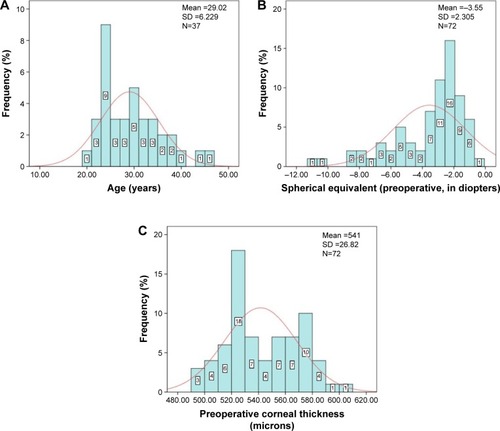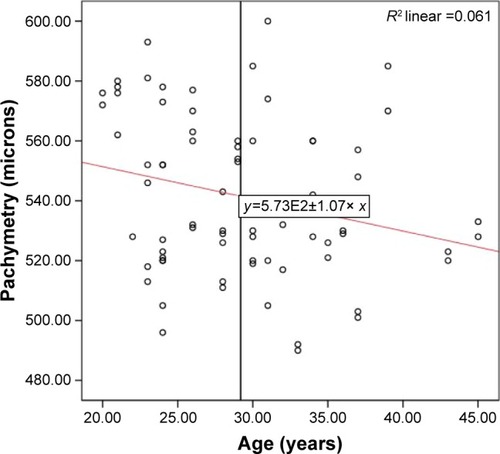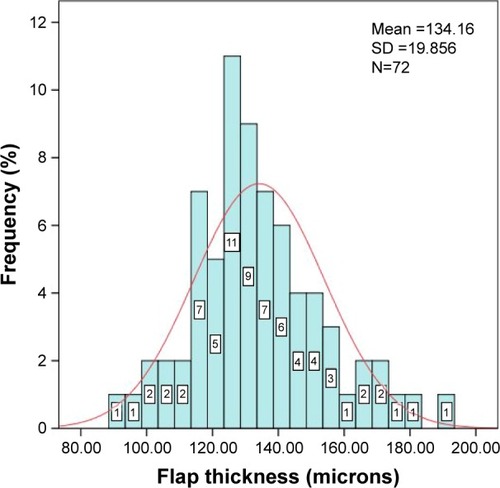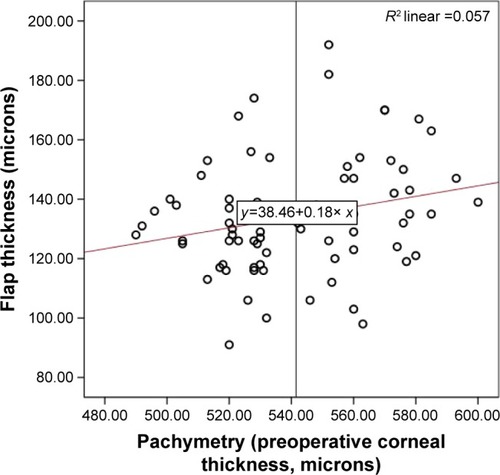Figures & data
Figure 1 (A) Frequency distribution of age (in years); (B) frequency distribution of spherical equivalent (in diopters, D); (C) frequency distribution of preoperative corneal thickness (pachymetry, in micrometers) in all cases.
Abbreviation: SD, standard deviation.

Figure 2 Scatter plot of age (in years) versus preoperative corneal pachymetry thickness (in micrometers).



